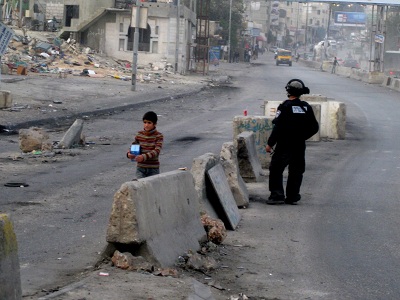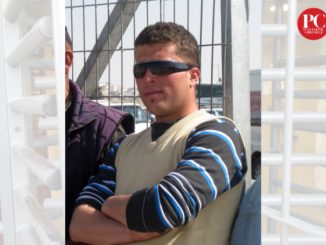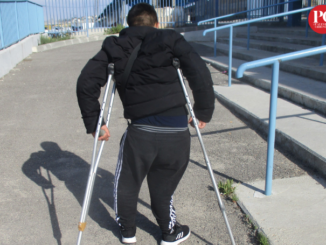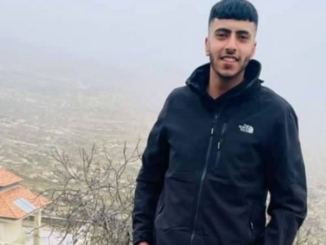
By Tamar Fleishman – Qalandiya, The West Bank
The final two days of Israel’s so-called Pillar of Cloud operation were declared as days of rage.
In front of the checkpoints, the prisons and the army bases – the symbols of the occupation in the West Bank – fierce demonstrations took place.
In response the army attacked the protesters with tear gas and shock grenades and didn’t refrain from firing with lethal weapons at the demonstrators, which is prohibited by order of the military prosecutor.
The teenagers of Qalandiya don’t need an official declaration of a day of rage. The rage has been flowing through their veins for a while now. They have been protesting for many weeks in front of the checkpoint.
They do it over and over again in spite of the objection of the Palestinian Authority and the anger of the business owners at the site, due to the damage caused to their livelihood.
The teenagers of Qalandiya that led the protest during the days of rage as well as during the previous weeks, that had poverty and despair shape their adolescence and follow them through their short lives like a shadow, had grown into an engine of determination.
They, who have never known content and prosperity, who had their childhoods crushed, they who see everything through the eyes of those who had been shot and are depicted in pictures hanging on the cracked walls of their homes, they that have ceased to fear the rifles or the Palestinian Authority, they who have yet to take the burden of a family on their shoulders, are made from the stuff that generators of change are made of, as well as leaders of struggles and revolutions. They don’t act separately but as one.
For these youngsters the slaughter expedition in Gaza was the oil that was added to the fire and not the burning match that lit it.
During each one of the two days of rage tens of them huddled up, they came sliding down the hill at the farther end on the separation wall, came bare chested with their faces unveiled towards the soldiers, holding in their clenched fists stones and Molotov bottles.
They were shoved back by rounds of shootings and disappeared behind clouds of gas.
Others skipped between the rooftops of houses, jumping from roof to roof as they joined their friends on the street in battle.
The shots were aimed at them as well and the smoke and bullets trails drew white and fire strips in the sky that was turning gray.
The area between the two camps looked like a battle field: a lot of shooting, a lot of stones, a lot of gas and many detainees.
And an old wrinkled woman coming out of the alleys of the refugee camp approached me and talked of the children that had been arrested. I asked: “are they your children?”- “All of the children are mine” she said and asked why I, a Jew, hadn’t told the soldiers that what they were doing was not to be done. A young man standing nearby replied:” she did, she yelled at them and they shoved her with force and yelled back at her to shut up”- “Then she should bring her friends from Israel, they should come here and see what they are doing to us”, she said and walked away.
After walking a few meters she turned as though she recalled something she had to add, she came back and once again approached me and said: “tell all your friends to come here…”, I promised that I would do so. Here I am, telling.
As of the beginning of the fighting in Gaza soldiers took over the rooftop of a corner building, they confiscated it from the owner, they appropriated it and turned it into a post from which they would snip at the teenagers. They were there from morning till night, soiling what wasn’t theirs, or as a friend said to me: “on the roof they do what is usually done in the toilet.
It seems as though the main street that leads to Ramallah was a site under curfew- the doors of the business places were all shut in compliance with the soldiers’ orders who had threatened the owners that any store that remained open would be gassed. The street was also under closure for a short period of time when the soldiers had their rifles drawn making sure that no one passed without permission. “A sterile zone” they call it.
And on the road that was empty of people, while the sound of fire being shoot was deafening and threatening, in the air that was mixed with dust and gas, stood the most charming boy Haled, he proceeded to look for buyers even when there were none, trying to earn another Shekel and another one, to sell another packet of chewing gum and another, because Haled has a quota he has to meet and must not dare go home before completing it.
“When are you going home, Habibi?” I asked- “At eight or nine”.
This personal tragedy embodies the collective one, through it we see our heartbreaking reflection.
(Translated by Ruth Fleishman)
– As a member of Machsomwatch, once a week Tamar Fleishman heads out to document the checkpoints between Jerusalem and Ramallah. This documentation (reports, photos and videos) can be found on the organization’s site: www.machsomwatch.org. The majority of the Spotlights (an opinion page) that are published on the site had been written by her. She is also a member of the Coalition of Women for Peace and volunteer in Breaking the Silence. She contributed this article to PalestineChronicle.com.









Merci Tamar !